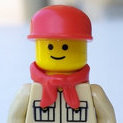
sten
Eurobricks Vassals-
Content Count
20 -
Joined
-
Last visited
About sten

Spam Prevention
-
What is favorite LEGO theme? (we need this info to prevent spam)
Technic
Profile Information
-
Gender
Male
Extra
-
Country
United States
Recent Profile Visitors
-
sten started following Henjin_Quilones
-

42056 - Porsche 911 GT3 RS - MODs and Improvements
sten replied to tripletschiee's topic in LEGO Technic, Mindstorms, Model Team and Scale Modeling
I have managed to create a front suspension that has Akerman, 18.4 deg of Kingpin inclination, and 9.5 deg of caster. I have not yet build the body around it, but I think it will be OK since it is more compact than the original one. It works quite well and is very sturdy for the most part, but it has some downsides: steering angle is the same as the original set (AKA not good, but any more and things would start rubbing), if you were to drop the front from several inches the hubs would pop off the towballs (pushing by hand to compress the suspension it is fine), it is not McPherson like the real 911, and finally the brake calipers only fit on the front. Here is my Brickshelf with some more and higher res photos. http://www.brickshelf.com/cgi-bin/gallery.cgi?f=565463 -

Formula SAE Racecar
sten replied to sten's topic in LEGO Technic, Mindstorms, Model Team and Scale Modeling
I am glad you liked it. I am the Chief Engineer this year so I am overseeing and guiding the technical direction of the car. -
Here is my newest MOC - it is based on a Formula Society of Automotive Engineers (FSAE) car that I am helping build at my University. FSAE is a global student engineering competition with events held in Germany, Italy, USA, Great Britain and several other countries. The car is not designed for high speeds - it is extremely maneuverable however. Our car uses a 600 cc engine, steel space frame, pull rod front suspension and push rod rear. The CAD model of the car is shown above (I made it red so you could see it better). I scaled it according to the diameters of the tires - which ended up being about 2 inches = 1 stud. This car has a pull rod front suspension and push rod rear. It has a 2 speed transmission integral to the engine which features an overhead camshaft and 8 valves. I tried to keep it scale to the car - the real one uses a Yamaha R6 engine which has dual overhead cams and 16 valves, but two cams were not possible. I have always been a bit dissatisfied with LEGO engines - they are usually only the block, pistons, tie rods, and crankshaft - which is like half of an engine. The cams work OK - but I would not push this around for a long time with the engine in gear since it is not the smoothest thing ever. I am using rubber bands for the valve springs. I have included an air intake, radiator, a 4-2-1 exhaust header (four pipes from the engine reducing to 2 reducing to 1 to the muffler), and a muffler. The differential is chain driven just like the real car. There is a shift lever in the cockpit. The whole chassis is surprisingly stiff and altogether this model worked out pretty well. This uses parts from 8110 and 42000 (there could be some other sets there too). I have more images on my Brickshelf http://www.brickshelf.com/cgi-bin/gallery.cgi?f=551976
-

42000 KERs and DRS MOD
sten replied to sten's topic in LEGO Technic, Mindstorms, Model Team and Scale Modeling
OK I have finally made a video that shows all of this in action. It is actually fun to play with now! -

42000 KERs and DRS MOD
sten posted a topic in LEGO Technic, Mindstorms, Model Team and Scale Modeling
I was rather dissatisfied with the stock 42000 model - it was silly to have to twist the knob so much to do anything and not very realistic. So I took out that entire system and added a pneumatic Kinetic Energy Recovery System (KERS) that turns on with the actuation of a lever. The air can be used to fill an tank which can be used for the Drag reduction System (DRS), or can be used directly for the DRS without going through the tank. I wanted to be able to have the DRS work without moving the car, so I added a manual pump that can only fill the tank. The tank can be connected or disconnected from the system as desired so that you do not have to fill the tank when pushing the car, but can still use it. I also eliminated the linear actuators for the engine cover - and replaced them with a spring loaded mechanism which holds it open and locks it shut - much more convenient and I think more clever than the actuators. This image shows the pneumatic circuit and all of the inner workings. The final engine bay with everything packaged. I had to remove two of the exhaust pipes - but they were a bit silly since its a V8 which should have 8 primarys not 6 - so I am calling them secondarys for which 4 is the correct number. The bottom view. In my opinion, these MODs add a ton of playability. I would like to make a video, but am unsure when I will have the time. The DRS is waaay faster - more like real F1 cars. -

Your Best Technic Bargains
sten replied to Kumbbl's topic in LEGO Technic, Mindstorms, Model Team and Scale Modeling
Last year I got a 8043 for $160 with tax from TRU. I had called about stock and asked what the price was and they said a very low and incorrect number (like $130!). When I went there and found the price was $220, I complained and got $70 off. I was pretty happy about it especially since TLG had just retired it. -

What is your 41999 License Number and Location?
sten replied to Lucien70001's topic in LEGO Technic, Mindstorms, Model Team and Scale Modeling
I got 02098 from S@H US.- 220 replies
-
- limited edition
- licens plate
-
(and 2 more)
Tagged with:
-

8110 - Unimog - MODs and Improvements
sten replied to tripletschiee's topic in LEGO Technic, Mindstorms, Model Team and Scale Modeling
Here is a LDD file for my portal axle. The differential is backwards and I could not find a cv joint or the ball joint . http://www.brickshelf.com/cgi-bin/gallery.cgi?f=531294 -

8110 - Unimog - MODs and Improvements
sten replied to tripletschiee's topic in LEGO Technic, Mindstorms, Model Team and Scale Modeling
With the steering issues the Unimog has, I decided to try to make my own portal axles with the Kingpin axis 1 stud closer to the wheel. This combined with slowing the steering down by increasing the length of the steering arm has dramatically improved the steering of the mog on terrain. It is now playable! I know nicjasno made a solution, but I did not have the pieces! The pros of this: Very stable, strong and uses fairly common pieces and requires no modifications to the chassis. The cons: it does use some pieces not originally on the axle, the wheel is not as well secured (the axles can pull out of the upright), and the turning radius is bad (about what the original set is supposed to have with the little gray pieces). Altogether, I am very satisfied with how this turned out! Note that the dark gray pieces securing the shocks can (and should) be replaced with by the way that they are originally secured (I didnt have enough of these http://www.brickset.com/parts/?part=4610371). -

Custom power supply - an idea
sten replied to Sariel's topic in LEGO Technic, Mindstorms, Model Team and Scale Modeling
Just a heads up if anyone is planning on using LiPO - do not run them down all the way. In order for them to charge they need to retain close to 3 V per cell. 8878 includes low voltage cutoff to prevent one from draining the batteries, but RC ones do not. -

Need help with a design for a powered, steerable, independent suspensi
sten replied to Dreadredbeard's topic in LEGO Technic, Mindstorms, Model Team and Scale Modeling
I would not use the portal hubs. They make the king pin axis very far from the wheel. Here is a concept that I made http://www.eurobricks.com/forum/index.php?showtopic=79819&hl= (the top one is the one applicable to your situation). I am not sure if this would be sturdy enough, but it is as compact as is possible (could shorten the arms only) and does not use the pre-made 'A' arms, while still having gear reduction at the wheel. Hopefully this gives you some ideas. -

Arduino and PF Motors
sten replied to peter_m's topic in LEGO Technic, Mindstorms, Model Team and Scale Modeling
As reibuehl already said you need to use a transistor. However, if you want bi directional motor control, the simplest and cheapest way (though bulky) is to use a DPDT relay and 2 transistors. This is a good schematic and some explanation http://www.me.umn.edu/courses/me2011/arduino/technotes/dcmotors/bidirectional/bidirMotor.html. To control the speed of the motor you need to use PWM (pulse width modulation) which essentially pulses the voltage which results in a lower average voltage and thus a lower speed. The pins that can be used for this depend on the model of Arduino. The code to do this looks something like this: analogWrite(motorpin,88); // the number can be anything from 0 to 255 with 255 being continuously on and 0 being off. This describes it in more detail http://arduino.cc/en/Tutorial/SecretsOfArduinoPWM. I hope this helps some. Also, keep in mind that Arduinos can only provide a limited amount of current (an Uno can give 40 mA per pin and not much more than that total) and many LEDs going will max this out. Which would require you to use more transistors. Here is a good all around Arduino resource with everything from programming to wiring https://docs.google.com/viewer?a=v&pid=sites&srcid=dW1uLmVkdXxtZTIwMTF8Z3g6NWMwYTgxZTVjYjIxZThjNg- 8 replies
-
- PF
- Power Functions
-
(and 3 more)
Tagged with:
-

RC of lego technic "supercars" sensefull or not?
sten replied to Kumbbl's topic in LEGO Technic, Mindstorms, Model Team and Scale Modeling
I only recently got the supplies to use power functions using IR and so have only built one model (http://www.eurobricks.com/forum/index.php?showtopic=80554&hl=). It really isnt very fun at all to drive because it is slow and I couldnt gear down the med motor for steering enough, so steering is super touchy. In hindsight, it would have been more fun to play with without the motors. The build however, was more fun since it was a challenge to fit everything in and make it work. For the scale, I dont think that there are any more realistic functions that I could have included, since a gearbox would be too large (I think!) and the engine blocks are far too large. I wanted to have driven axles, but without anything on the other end, it would be pointless. Hence, power funtions. So for some situations and some builds, they have a place. Others, not so much. Its all a balance between playability and reality, which varies from person to person. -

Semi-Truck MOC
sten replied to sten's topic in LEGO Technic, Mindstorms, Model Team and Scale Modeling
Thank you all for your positive feedback! They are attached with frictionless pins, but I havent noticed any problems with them being too loose and bending around. -
This is a 10 wide MOC based upon a Peterbuilt 379. It has remote control steering and drive and opening doors. It has rear pendular suspension and both rear axles are driven. The reciever can be seen slapped on the back - I ran out of room. 2 medium motors and a battery pack (not the rechargable one no less) take up a lot of space... I hope to make a trailer to go with it.




